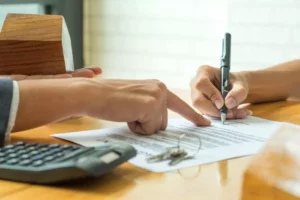Nowadays, 3-way match processing is widely used by accountants and business owners. What is this and what role does it play in business processes and success? Get answers to these questions in this article.
Overview
Doing business does not just mean always mean having money coming into your business. It also involves a fair share of expenses. If you want to work with your suppliers and other partners on a long-term basis and simply wish to avoid issues as well as late fees, it is necessary to pay your bills and do it on time. At the same time, businesses often choose to pay the suppliers or other partners after they receive the goods or services. This allows them to keep the cash in the business for as long as possible and safeguard themselves in case of goods delivered in an unsatisfactory condition, unfulfilled orders, and other issues.
Even if the goods are already delivered, it is not always a good idea to rush and get the invoice paid. After all, your business can stumble across a fraudulent invoice or pay for the wrong amount of goods or the wrong amount of money. Thus it is reasonable to first do some checking to reduce your risks. One of such methods is the 3-way match method.
In short, this method requires comparing information from the purchase order, the vendor bill, as well as the data on the receipt. If the information on all these three documents matches (hence the 3-way match method), then you can proceed to pay the bill and send the payment to the supplier without worrying that you were scammed, that you or the supplier made an unintentional mistake, and that you paid for incomplete delivery. If the issue arises, you can pinpoint exactly where the problem came from.
Three documents
To effectively apply the 3-way match method for validating the transaction details before making a payment to the seller, you would take a closer look at each document involved.
- Invoice. You might also see the invoice referred to as vendor bill or simply bill. In our context, they all mean the same – a written or printed statement given to a client that shows an amount of money owed for goods supplied or services rendered. It also provides a list of goods sent or services provided along with the sum due for these. In addition, you will info such as the invoice number, name, and contact information of the supplier, any discount the supplier might be offering, as well as the timeframe during which the invoice should be paid.
- Purchase order. This document can be thought of as an order confirmation receipt or a contract between the parties involved in the transaction. This document contains detailed information on the product or service being purchased, including quantity, price, and any discounts, as well as repayment terms. Thus, this document can be used to resolve any issues that might arise when the order is fulfilled.
- Receipt. A receiving report is a document that confirms that the buyer received the goods ordered or services provided by the supplier. Just like the previous documents, it has information about the goods that were delivered or work done by the other party.
If you have all three documents on hand and are able to compare the details on all three of them against each other, then you are essentially completing then you are essentially completing the invoice matching process.
Purpose and Benefits
We already mentioned some of the reasons businesses go with the 3-way matching. However, one should know that this process requires time and labor, and other resources to make it possible. Both the seller and the business need to do some work to get all the paperwork done and sent to the other party. To a certain extent, there is a back and forth communication and participants check that the documents are accurate and request a correction if any discrepancies are found.
So, why should you use this verification method despite all the effort it requires? Despite all the work involved this verification method is an effective business practice where both sides benefit. By requesting these pieces of information and checking them against each other, businesses make the payment process for the goods they purchase fool-proof and secure.
Despite the time and additional resources required for making this matching possible, the company will actually win time and money in the end. Why? As a result, you will get consistent and accurate financial data in regard to Accounts Payable, which is essential for overall success. Thanks to thorough verification, no duplicates or wrong or fraudulent information and seep through, leading to wrong invoices been paid and over or underpaid transactions.
Of course, it might be irrational, especially for a large enterprise, to have this process for every single purchase and invoice they pay. In most cases, it makes sense to use the three-way matching with new suppliers and for large orders because in both cases, the company faces bigger risks in comparison to smaller orders or working with sellers it can be confident in trusting that no issues will arise. In any case, if your business can do 3-way matching, then it will never be redundant.
It is also worth noting that such cooperation of the buyer and seller only strengthens their relationship and trust. The seller is more likely to work on good terms with a company because it knows it takes every invoice seriously.
Preventing fraud and paying for what you believe you are paying are not the only reasons to use the 3-way matching. When the auditing time comes, your business will already have error-free and completed paperwork. This means that the business will not have to spend additional time waiting for these documents to be ready for the audit and the auditor will have an easier time completing their job.
How it works
Once set up, the 3-way match process works systematically and is simple to understand. For instance, you place an order for 100 nightstand lamps and the seller agrees to sell them to you for $20 each. Accordingly, you will send a purchase order to the supplier with these details. Based on the purchase order, the accounting department of the supplier will prepare an invoice that you will later receive.
Next, you will place the invoice next to the purchase order and compare corresponding lines to see if the supplier sent the invoice for the right product (lamps and not chandeliers), that the quantity corresponds to the one specified in the purchase order, or 100 items in our case.
Finally, you would need to ensure that the order receipt that came with the lamps delivered by the seller gets to the accounting department. Matching the invoice and this packaging slip will be the final step in confirming the accuracy of the invoice you are going to pay. If everything looks good, your accounting department has a good-to-go pass to send the seller the money for the lamps purchased by your company.
Now, at any stage of this matching process, you might see that the invoice does not correspond to the purchase order and you were bill for 100 nightstand lamps, but the price charged per unit is not $20, but $22. This is when you would need to communicate with the seller to resolve the misunderstanding. You might also realize that the seller shipped you 110 nightstand lamps instead of the 100 specified in the purchase order and the invoice. Accordingly, you would need to either return the extra lamps or pay for them.
As was pointed out earlier, the process can be pretty lengthy. Fortunately, there is software that can automate the whole process. Typically, purchase orders are created and sent through the accounting software. Paper or email invoices are scanned and an intelligent system recognized and automatically populates the fields in its records. The receipt is also imported or scanned. The system can automatically check if the data matches and makes all three documents available in one place. If there is no issue the accounting system approves the invoice, otherwise, it is rejected until discrepancies are resolved.



















